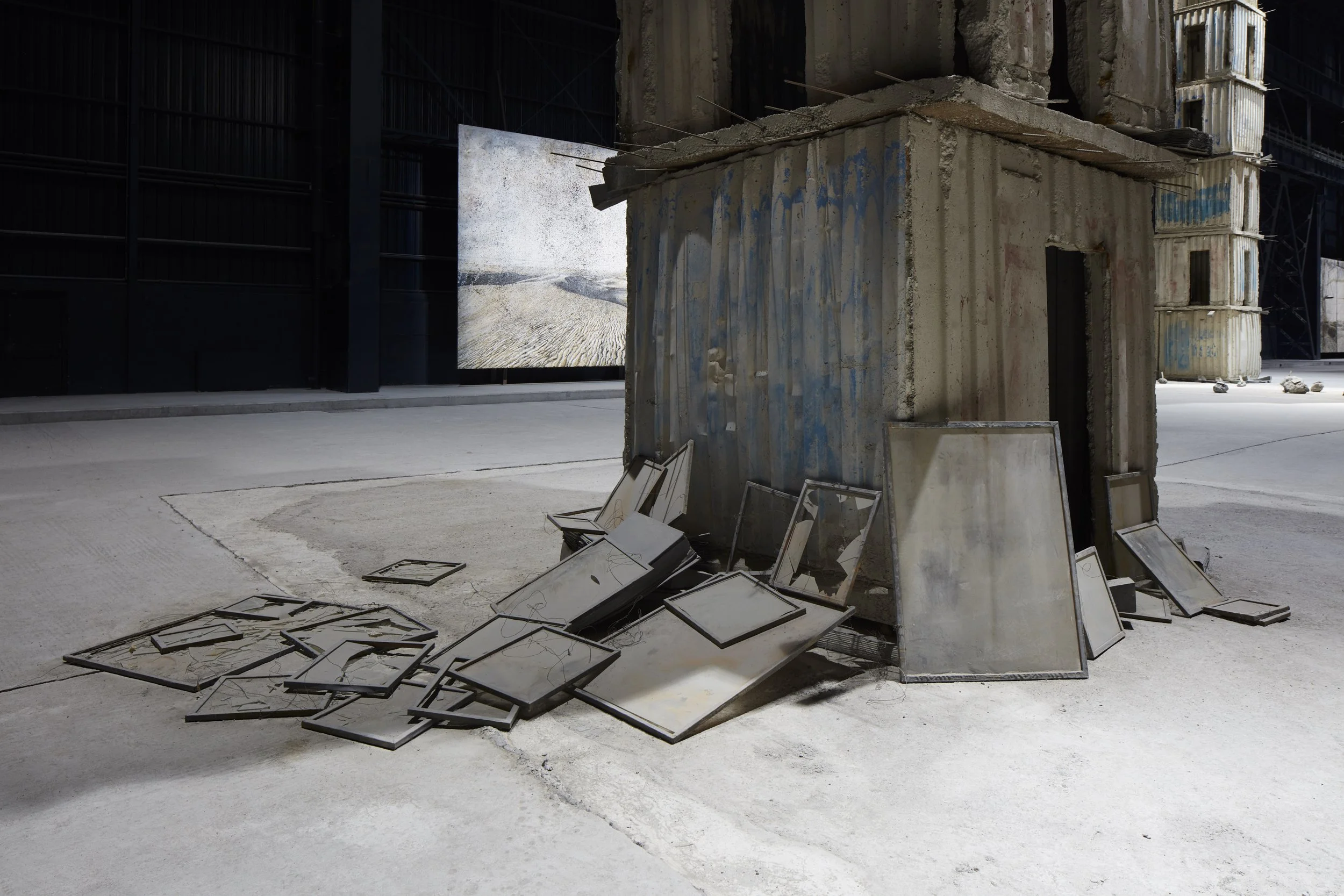Design Anthology/ MUSEUMS’ SERIES
Anselm Kiefer: The Seven Heavenly Palaces 2004-2015 . Installation view at Pirelli HangarBicocca, Milan, 2016. Courtesy the artist and Pirelli HangarBicocca, Milan. Photo Lorenzo Palmieri
Anselm Kiefer: The Seven Heavenly Palaces 2004-2015 . Installation view at Pirelli HangarBicocca, Milan, 2016. Courtesy the artist and Pirelli HangarBicocca, Milan. Photo Lorenzo Palmieri
The Seven Heavenly Palaces by Anselm Kiefer (Donaueschingen, 1945) is not just his largest work within a museum space, but also a work of art so powerful that it started the history of a place. It is a highly spiritual work, whose title is inspired by Jewish Kabbalah and it refers to man’s aspiration to ascend to God as well as to the arrogance that led humanity to the great wars of history. Entering it is like finding oneself in a desolate landscape, populated only by the rubble of our present: the towers, which seem on the verge of collapse, are manufactured using containers, emblems of globalization, and around them are scattered objects–symbolic, alchemical, and cosmological references–covered in the dust of time. It is a landscape of ruins, an end that is also a beginning, as in the thinking behind the artist’s poetics: collapse is inevitable but it is also the only condition that allows poetry and art to be born. For Kiefer, art is continuous transformation: his vision is that once works leave the studio, they must become part of the world, not be separated and protected, but lived, inhabited, transformed.
Hence, in a certain sense, The Seven Heavenly Palaces are the best example of this process of constant metamorphosis: when Kiefer entered the old factory premises in 2004, he said he literally “saw the traces of the people who had worked there for perhaps a hundred years.” Starting from a past history, the artist created a work that could transform the space, marking the passage of the old Breda factory into a museum of contemporary art, Pirelli HangarBicocca. Kiefer allowed time to change the Seven Palaces: over the years, the flooring has changed, the entrance has been moved, the relationship with the adjacent space has been modified, while in 2015 the artist himself wanted to add five large canvases to the work. Above all, Kiefer wanted this work to become a living force, a part of society and the community. In its 21 years of existence, The Seven Heavenly Palaces 2004-2015 has welcomed new communities of people, concerts, performances, and even a vaccination center during the Covid epidemic becoming a most appreciated masterpiece and a modern agora.
Anselm Kiefer: The Seven Heavenly Palaces 2004–2015 (detail). Installation view at Pirelli HangarBicocca, Milan. Courtesy the artist and Pirelli HangarBicocca, Milan. Photo Agostino Osio
Anselm Kiefer: The Seven Heavenly Palaces 2004–2015 (detail). Installation view at Pirelli HangarBicocca, Milan. Courtesy the artist and Pirelli HangarBicocca, Milan. Photo Agostino Osio
Giovanna Amadasi,
Head of Public and Educational Programs Pirelli HangarBicocca




